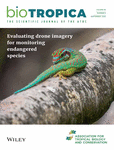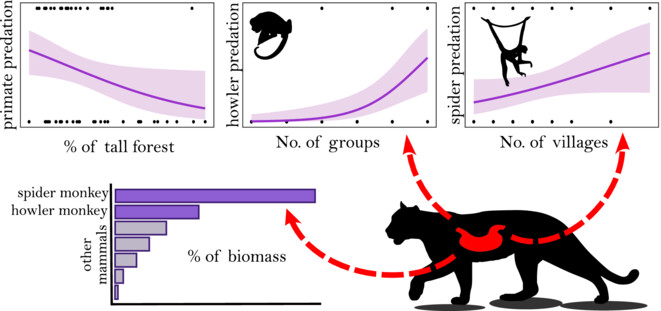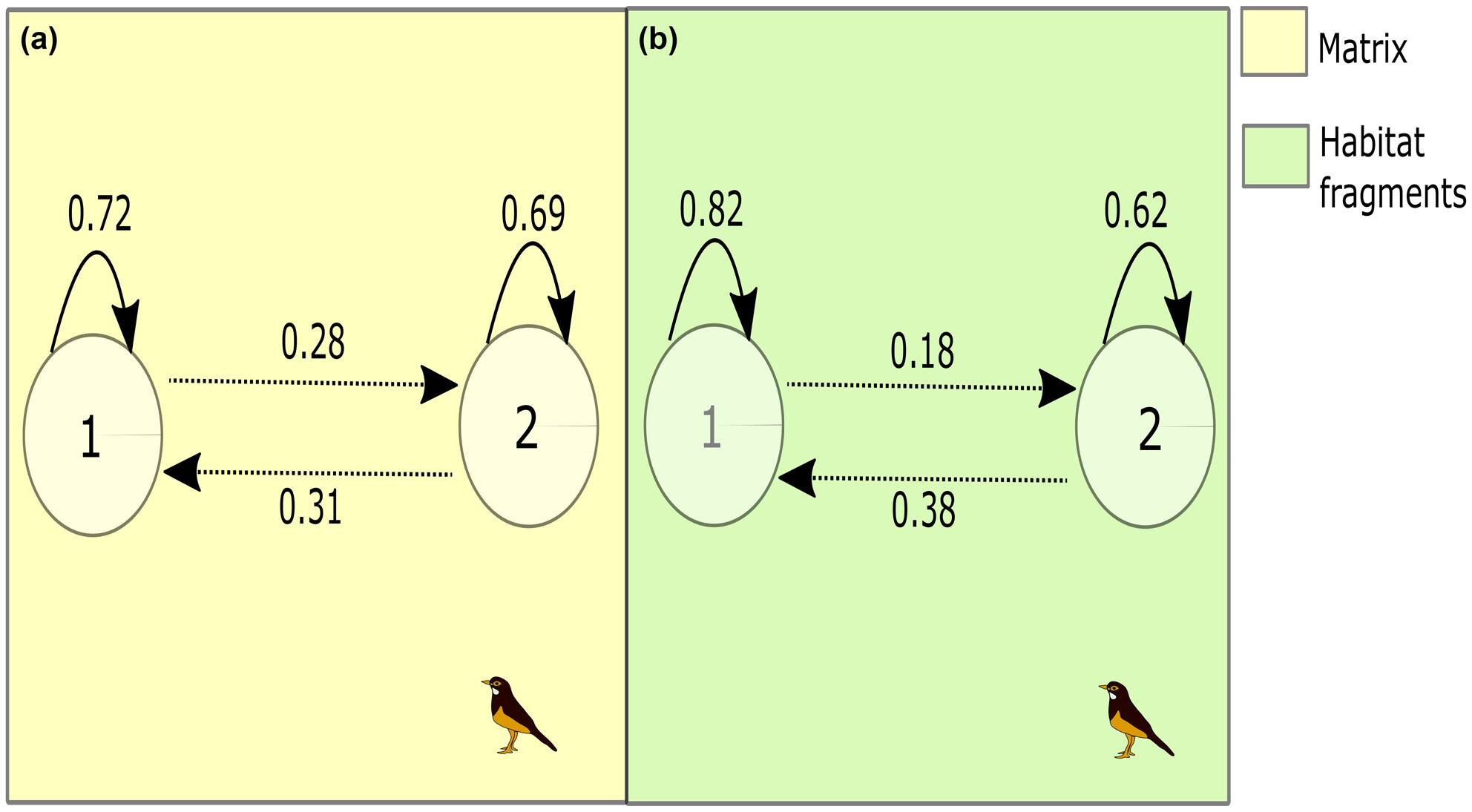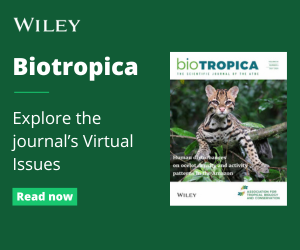Journal list menu
Export Citations
Download PDFs
ISSUE INFORMATION
ORIGINAL ARTICLES
Seedling growth declines in warmed tropical forest soils
- Pages: 897-910
- First Published: 06 August 2023
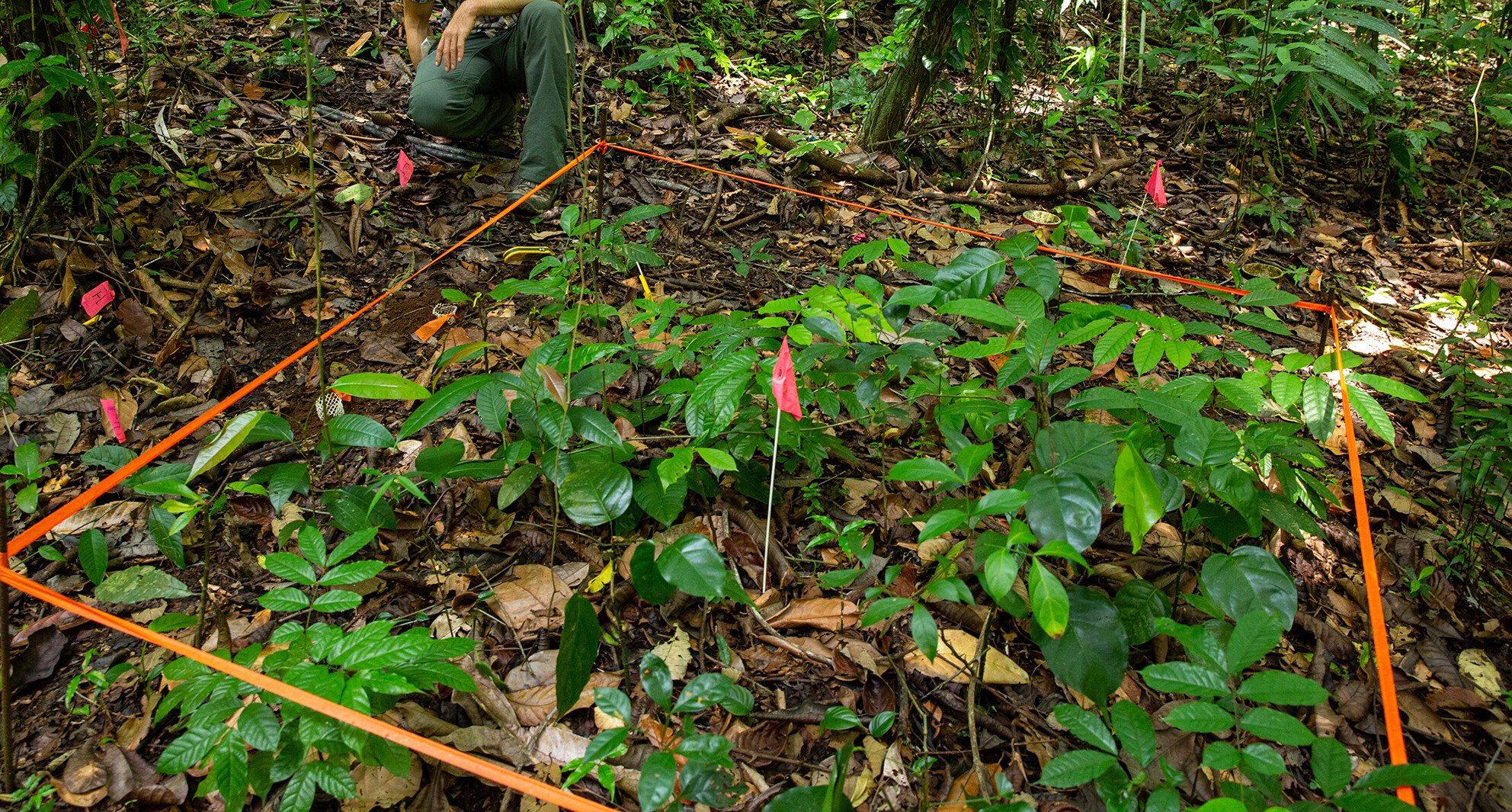
The response of tropical forest plants to a warming climate could have a large feedback on further climatic change. To address this, we tested the response of six tree species seedlings to 3 years of in-situ experimental soil warming. Our study demonstrates that belowground warming causes species-specific declines in the growth and photosynthesis of seedlings, with a suggestion—requiring further investigation—that this growth decline is larger in N-fixing species.
A bird's-eye view: Evaluating drone imagery for the detection and monitoring of endangered and invasive day geckos
- Pages: 911-919
- First Published: 15 June 2023
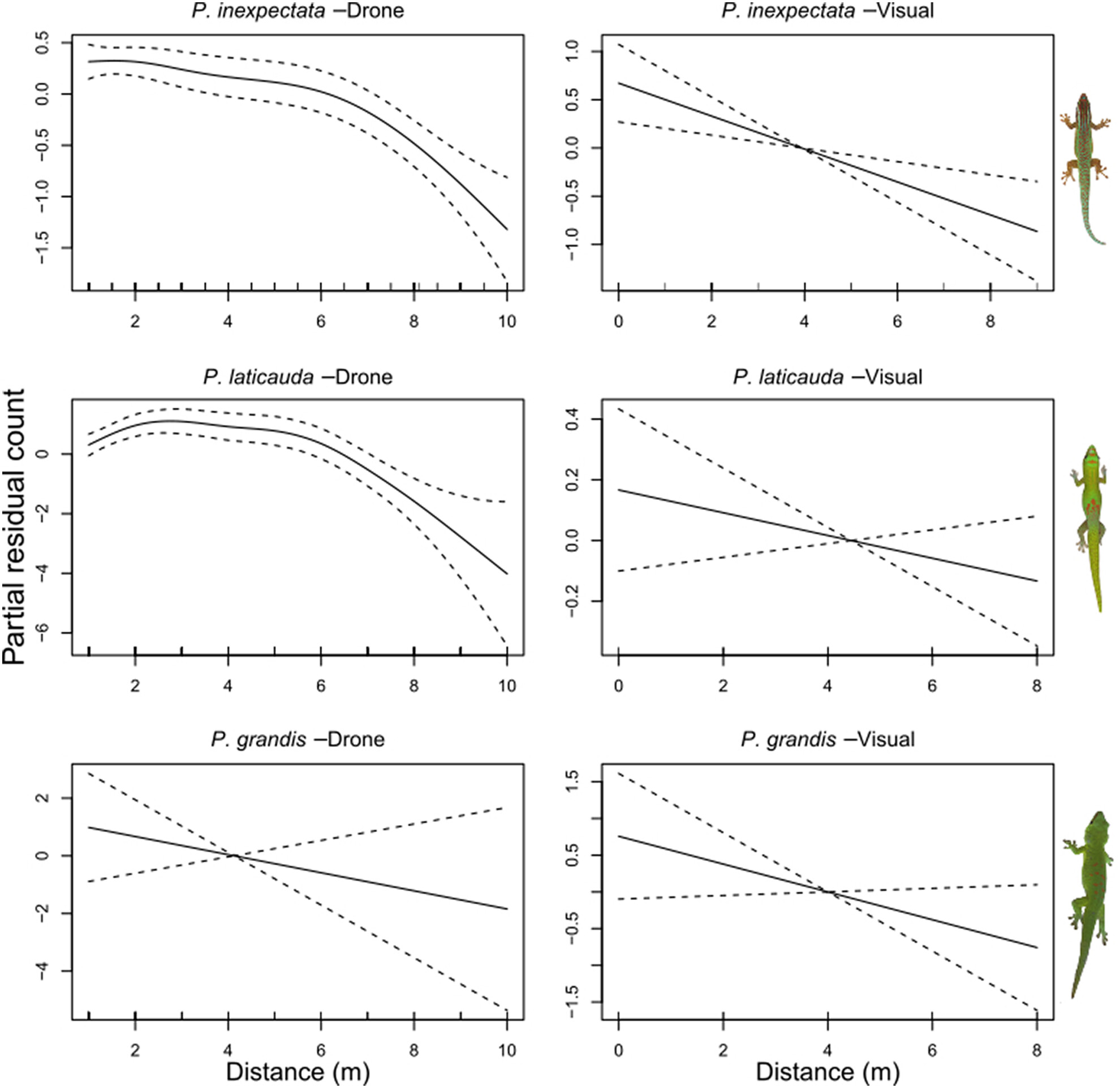
We tested the efficiency of drone-based monitoring in accessible and inaccessible areas on three diurnal gecko species. We showed that drone imagery prove useful for the detection of threatened and invasive species in the canopy and other inaccessible areas. We provide methodological recommendations to maximize detection.
Drivers affecting habitat use in Afrotropical hipposiderid and pteropodid bats
- Pages: 920-932
- First Published: 09 July 2023
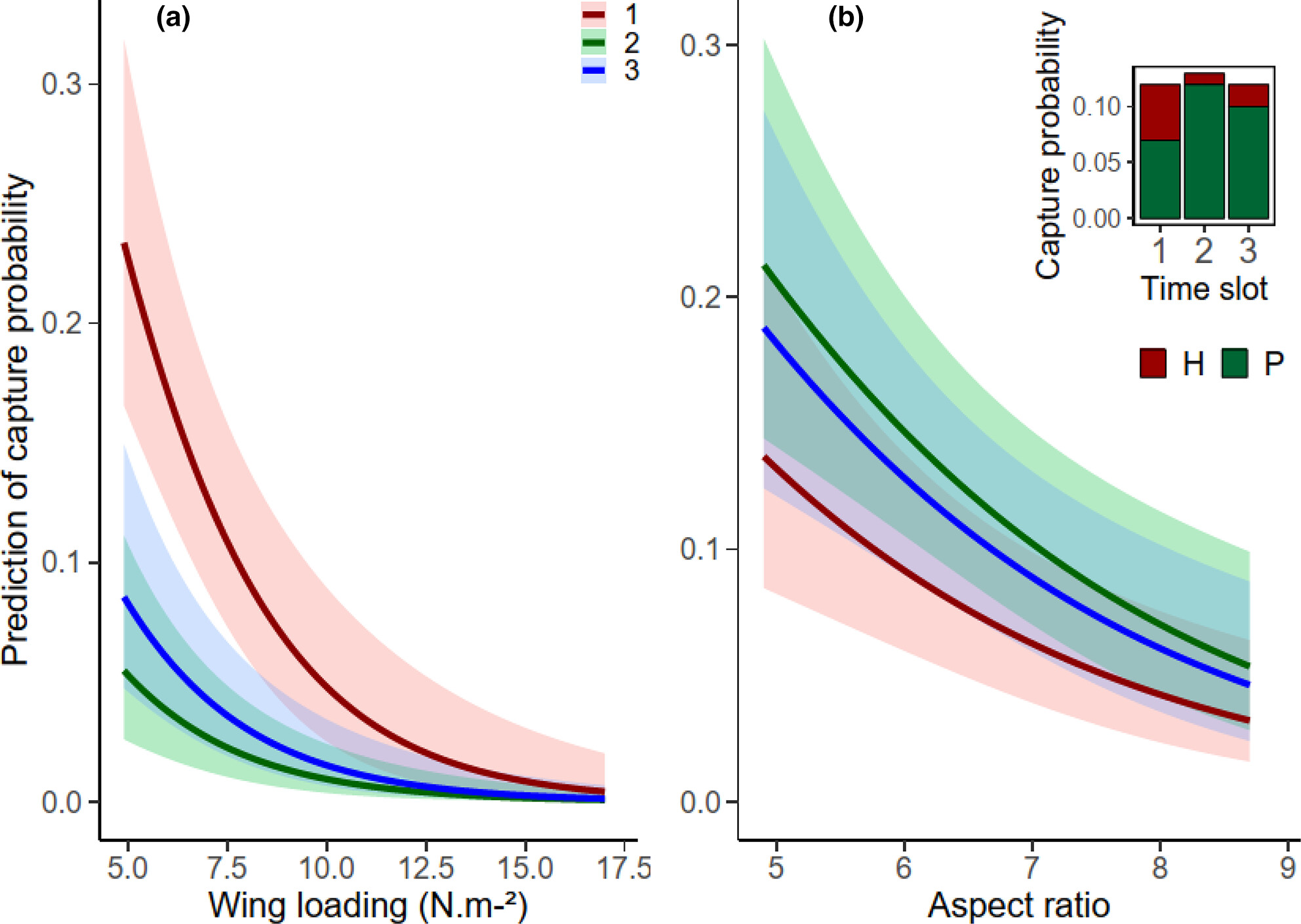
Morphological characteristics of bats are key factors influencing flight activity and species detection. Strong relationships between flight patterns and detection probability emerge in hipposiderids (a) due to their limited dispersal abilities and potential dependence on local resources. The greater flight capabilities of pteropodids (b), however, suggest flexibility in habitat use.
Population dynamics and social organization of sambar (Rusa unicolor unicolor) in Horton Plains National Park, Sri Lanka
- Pages: 933-943
- First Published: 21 July 2023

We estimated the population density and investigated the social organization of sambar (Rusa unicolor unicolor) in Horton Plains National Park (HPNP), Sri Lanka by using distance sampling. Largest groups recorded from September to December (up to 52), the period accompanied by the most observations of mating and sparring behavior. Although on a tropical island, HPNP is situated on a rolling plateau landscape in the highlands, where sambar showed a degree of reproductive seasonality somewhat similar to temperate cervid species.
Sampling local ant diversities and the importance of trait analyses
- Pages: 944-953
- First Published: 09 July 2023
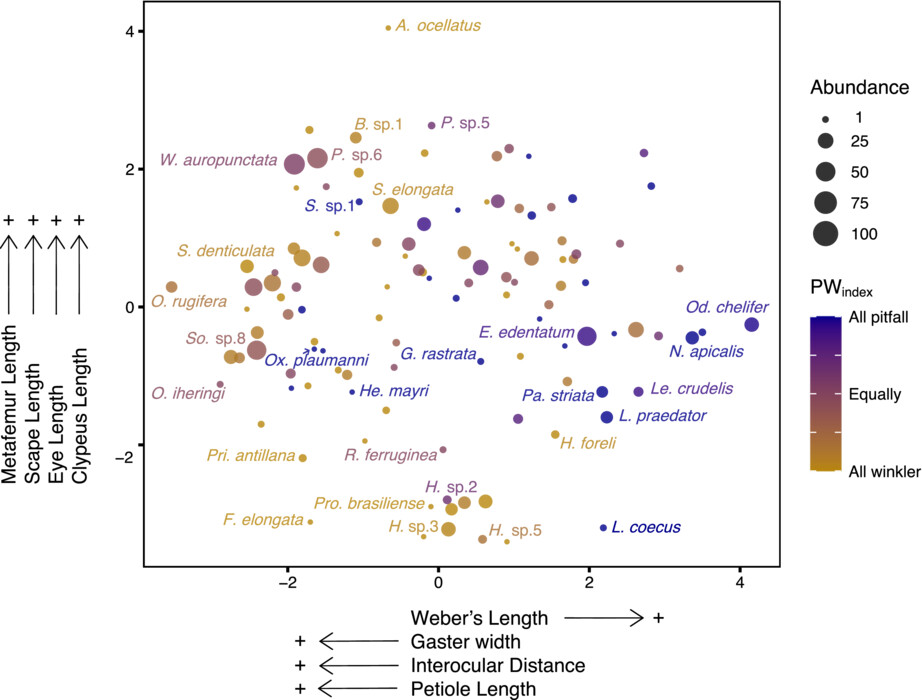
We aimed to quantify taxonomic and functional diversities for the local ant assemblage by integrating metrics and evaluating the complementarity of pitfall traps and Winkler extractors for the leaf litter versus epigeic faunas. We determined the effect of sampling techniques on functional composition and functional diversity by applying a new index (PWindex). Pitfalls and Winklers overlapped in the sampling of the overall community, but our PWindex illuminates how each sampling method contributed with a unique spectrum to the ant morphospace.
DNA-based fungal diversity in Madagascar and arrival of the ectomycorrhizal fungi to the island
- Pages: 954-968
- First Published: 19 July 2023
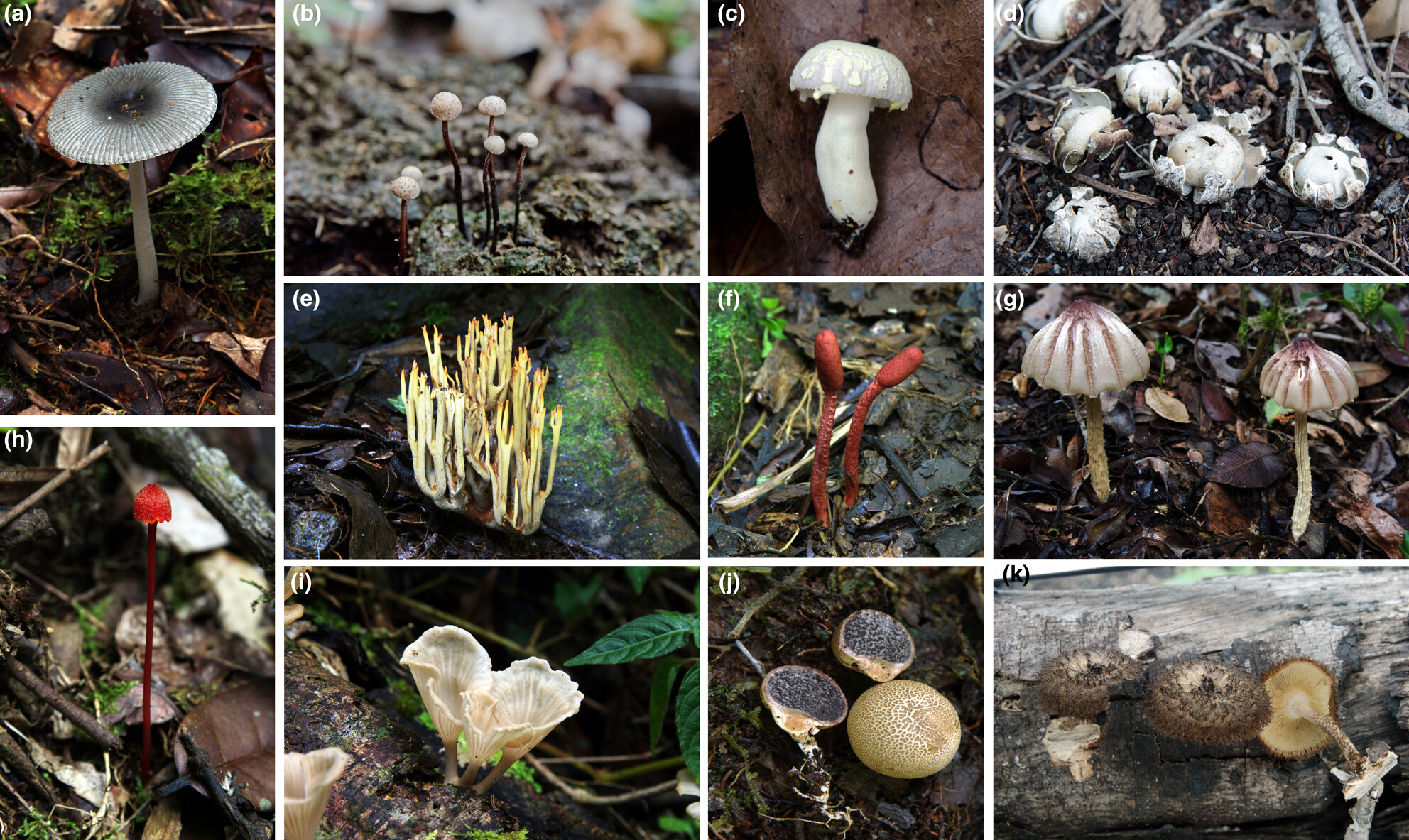
Following the analysis of all available fungal ITS sequences from Madagascar, we report 620 fungal OTUs, 10% of which contained sequences only from our field opportunistic surveys, highlighting how much fungal diversity is yet to be discovered in the island. We provide the first molecular-based estimates of endemism for Fungi in Madagascar. Sixty percent of all fungi and 81% of the ectomycorrhizal OTUs are endemic to Madagascar. Phylogenetic analysis of the ectomycorrhizal families Amanitaceae, Boletaceae, and Russulaceae reveal that most species from Madagascar diverged less than 22 million years ago (mya), long after the separation of India and Madagascar (88 mya), which is consistent with a dispersal-mediated arrival process to the island.
Neo-tropical felid activity patterns in relation to potential prey and intraguild competitors in the Calakmul Biosphere Reserve, Mexico
- Pages: 969-977
- First Published: 23 July 2023

There is little temporal segregation between the nocturnal activities of jaguars, pumas, and ocelots in Mexico's Calakmul Biosphere Reserve, although pumas were more active closer to dawn. Jaguars had low activity overlap with species likely to be common prey, whereas ocelots had high overlap with their potential prey. Pumas displayed finer-scale similarities in activity with species likely to be common prey, showing that temporal segregation is an unlikely mechanism of coexistence.
Decadienal afforestation and risks to montane grassland amphibians in the Udzungwa Plateau, Tanzania
- Pages: 978-990
- First Published: 20 July 2023

Pine plantations are rising in previously tree-free landscapes to relieve pressures on native forests for timber. In tropical montane grasslands, the introduction of new pine plantations appears to disrupt native amphibian communities and may cause local extinctions. Careful studies are needed to understand the threat of plantation conversion to amphibians which are already in global decline.
Stratified activity: Vertical partitioning of the diel cycle by rainforest mammals in Borneo
- Pages: 991-1005
- First Published: 06 August 2023

Knowledge of animal activity is fundamental to our understanding of species ecology and community dynamics, but this information is lacking for most tropical arboreal mammals. We paired ground- and canopy-level camera traps in unlogged and recovering-logged forest in Borneo to investigate how mammals partition activity across three-dimensional habitat space. Our findings reveal clear differences in the activity of arboreal, terrestrial, and semi-arboreal species, and demonstrate how cross-strata sampling can provide much more complete insights of community dynamics within complex rainforest ecosystems.
Frog call transmission in forestry monocultures: Are there drawbacks?
- Pages: 1006-1018
- First Published: 01 August 2023
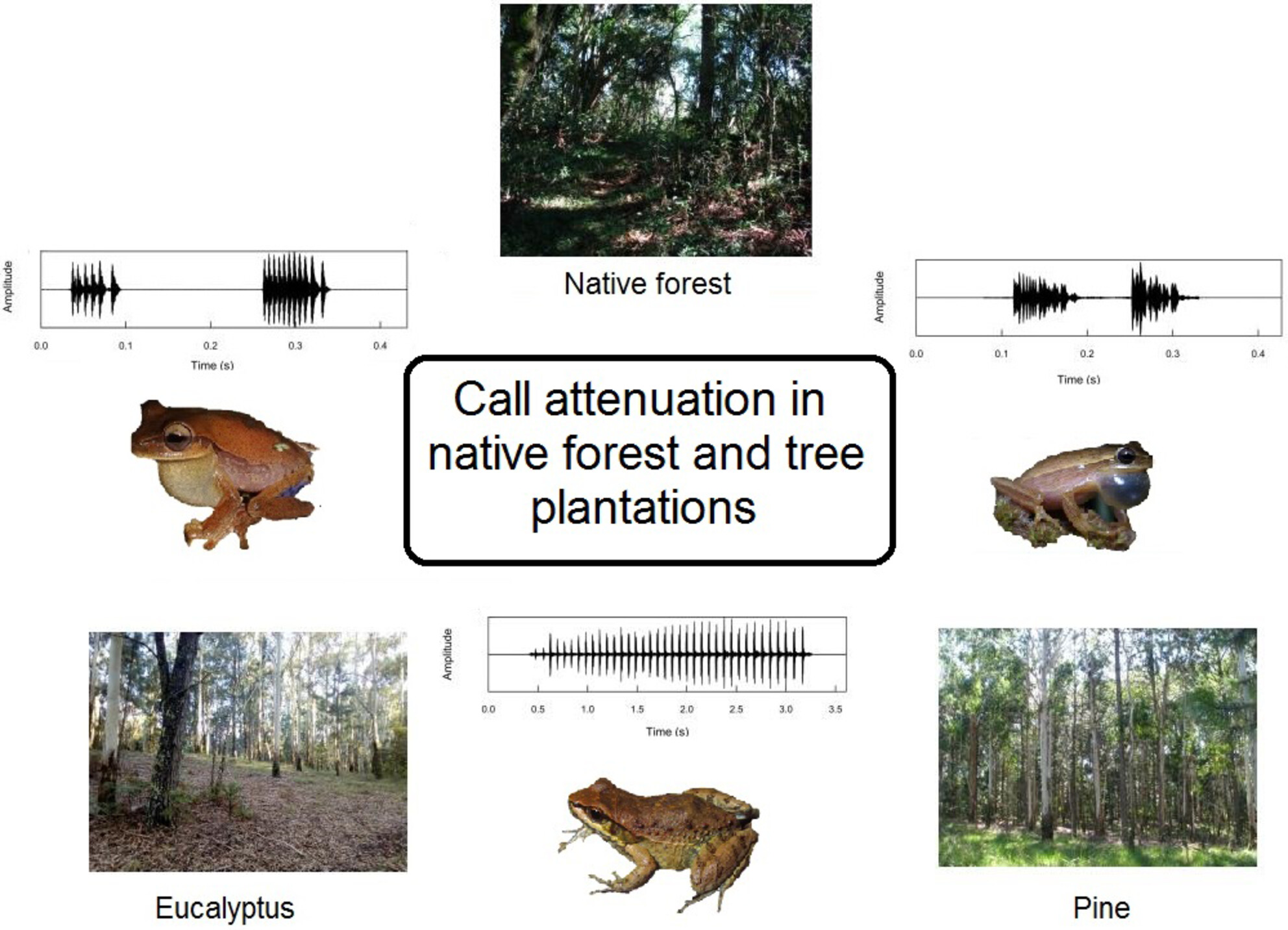
Anuran males emit calls, which transmission is influenced by the acoustics of the propagation environment. Thus, forestry monocultures of non-native trees represent artificial environments that could modify call transmission. We performed sound transmission experiments using calls of three anuran species native to southern Brazil and show that the advertisement calls of the two tree frogs (Boana) attenuate less in timberlands than in native forests, while the third species shows either no differences or less attenuation in native forests.
Radial and vertical variation of wood nutrients in Bornean tropical forest trees
- Pages: 1019-1032
- First Published: 02 August 2023
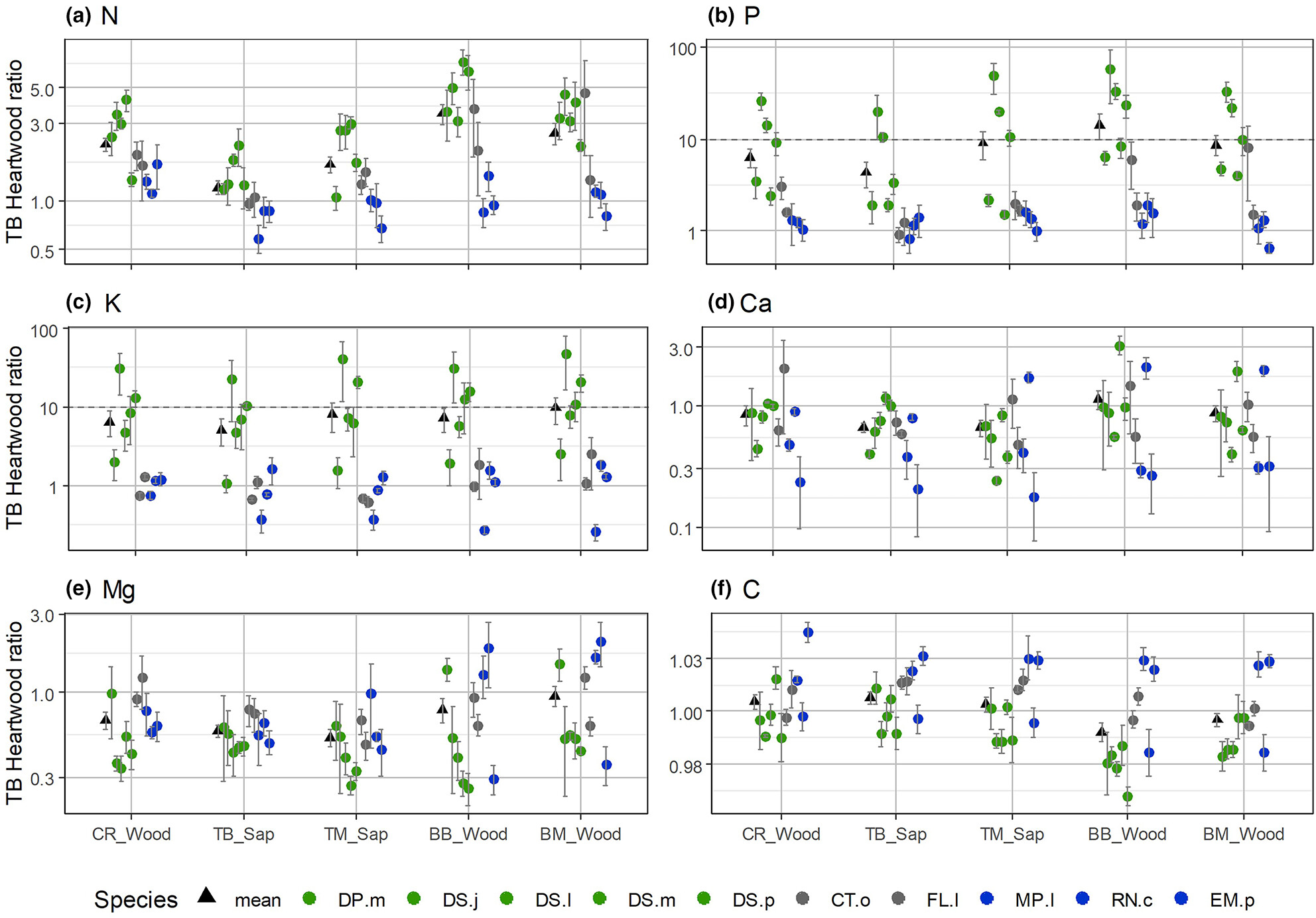
To our knowledge, this is the first quantification of macronutrient distribution across woody components for tropical trees which considers both vertical and radial variation, and the first estimates for all five macronutrients in coarse roots in tropical forests. Bark nutrient concentrations were consistently high: 2.9–13.7 times greater than heartwood depending on the nutrient. Our results provided empirical support for wood resorption during sapwood senescence, which is specific to dipterocarp family.
Recolonizing native wildlife facilitates exotic plant invasion into Singapore's rain forests
- Pages: 1033-1044
- First Published: 23 August 2023
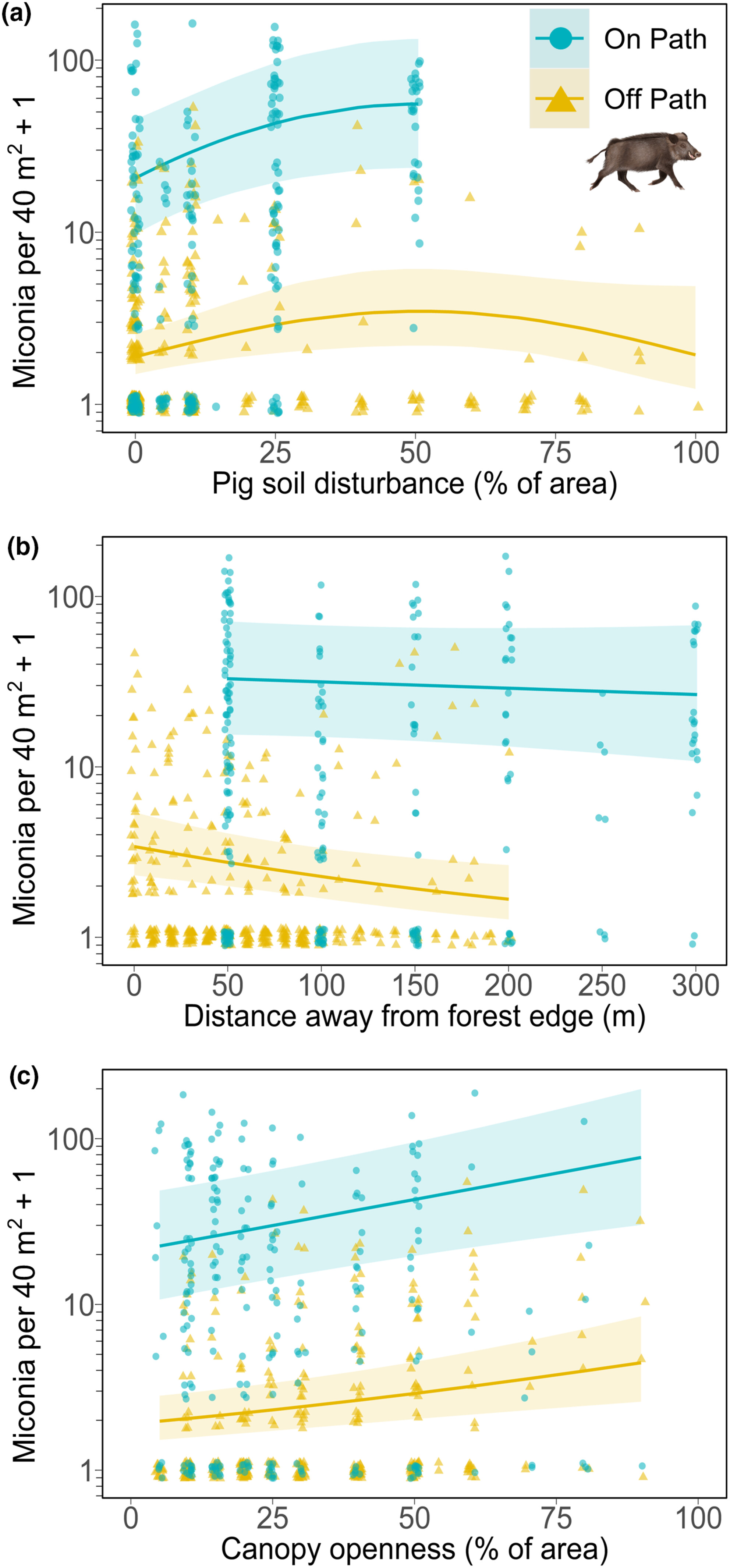
Rewilding and halting biological invasions are both conservation interventions to bolster biodiversity, species interactions, and ecosystems, but these actions have often been considered separately. Our case study from regenerating rainforests in Singapore showed that multiple factors including recolonizing native wild pigs' (Sus scrofa) soil disturbances, human paths, canopy gaps, and forest edges act additively to facilitate the invasion of a non-native plant Miconia crenata. This therefore highlights the need for practitioners to consider the potential negative externalities of rewilding or reintroduction practices, including the potential facilitation of non-native plant invasion by reintroduced fauna, which has been largely overlooked, as well as the need to consider multiple factors when controlling non-native plant invasions, especially human-introduced propagule sources and disturbances.
Cavity-nesting birds are limited by nesting habitat in Neotropical agricultural landscapes
- Pages: 1045-1057
- First Published: 23 August 2023
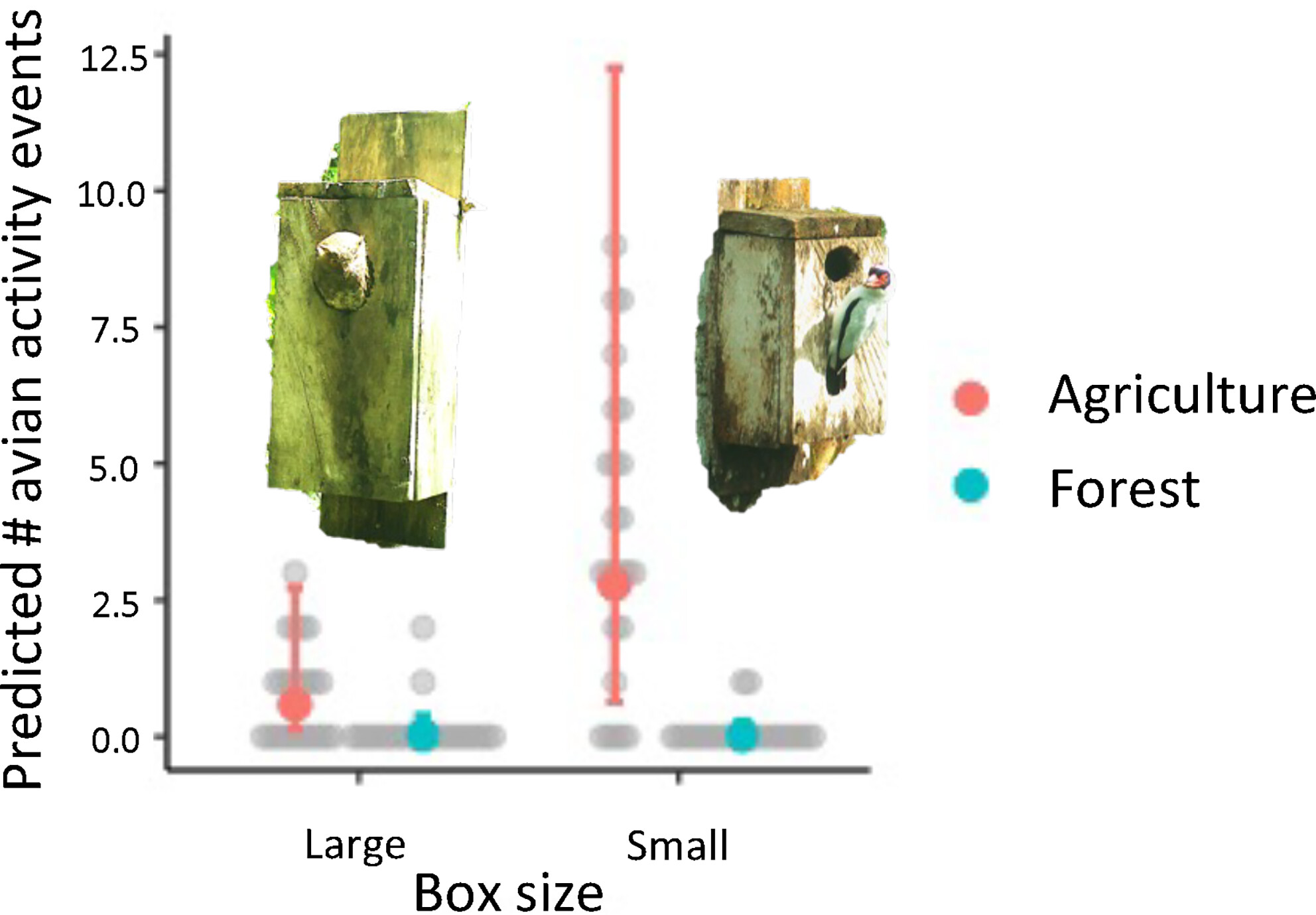
Although cavity-nesting bird diversity is highest in the tropics, little is known about how tropical birds use cavities, how agriculture affects their reproductive biology, and how effective nest boxes could be as a conservation strategy in tropical agriculture. We conducted bird surveys and monitored natural and artificial cavities to explore how habitat conversion from tropical forests to pasture affects the abundance, nesting habitat availability, and nest success of cavity-nesting birds in Northwest Ecuador. We found more cavity limitation and avian use of nest boxes in agriculture as compared to forest, suggesting that it is important to retain remnant trees in tropical agriculture to provide critical nesting habitat for birds.
Drivers of jaguar (Panthera onca) and puma (Puma concolor) predation on endangered primates within a transformed landscape in southern Mexico
- Pages: 1058-1068
- First Published: 23 August 2023
Bird movement patterns in an agricultural landscape are mediated by both habitat conditions and traits
- Pages: 1069-1080
- First Published: 23 August 2023




